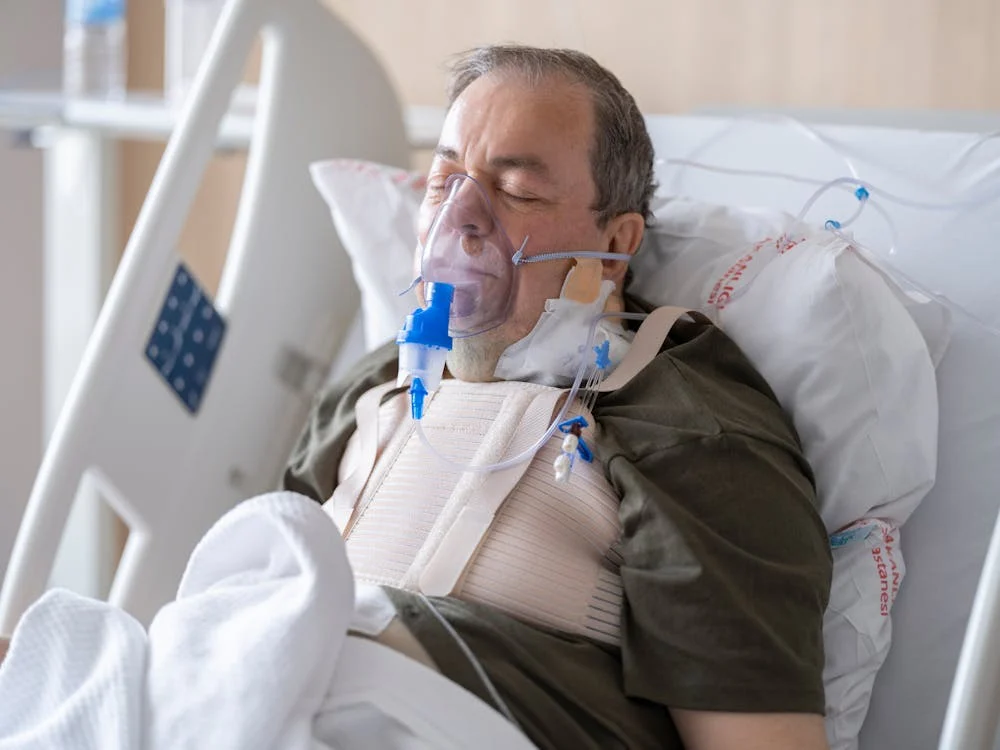Valacyclovir (Valtrex) is an antiviral medicine that is converted in the intestine to acyclovir.
Valacyclovir (Valtrex) is used in Treatment of :
-
-
herpes zoster (shingles) in immunocompetent patients
-
first-episode and recurrent genital herpes in immunocompetent patients
-
To suppress the recurrence of genital herpes and reduction of transmission of genital herpes in immunocompetent patients
-
suppression of genital herpes in HIV-infected individuals
-
herpes labialis (cold sores)
-
chickenpox in immunocompetent children
-
-
Off Label Use of Valacyclovir in Adults:
-
It is also used in treatment of:
-
Bell palsy, new-onset;
-
Cytomegalovirus, prevention in allogeneic hematopoietic cell transplant recipients;
-
Herpes simplex virus, prevention in immunocompromised patients;
-
Herpes zoster ophthalmicus;
-
Varicella-zoster virus, acute retinal necrosis;
-
Varicella-zoster virus, prevention in immunocompromised patients
-
Valacyclovir (Valtrex) Dose in Adults
Valacyclovir (Valtrex) Dose in the treatment of Bell palsy, new-onset (adjunctive therapy) (off-label):
- 1 g 3 times given daily for 7 days in combination with corticosteroids
- begin within 3 days of symptom onset
Valacyclovir (Valtrex) Dose as an alternative agent in the treatment of Cytomegalovirus (CMV), prevention in allogeneic hematopoietic cell transplant (HCT) recipients (off-label):
-
High-risk patients including:
-
CMV-seropositive HCT recipients and
-
CMV-seronegative HCT recipients with a CMV-seropositive donor:
- 2 g thrice or four times a day given daily, beginning at engraftment and continued to day 100 or 2 g thrice daily, started after initial therapy with intravenous ganciclovir from day 8 to day 2 before the transplant and continued until engraftment or longer in patients on glucocorticoids.
-
Dose in the treatment of Herpes simplex virus (HSV), mucocutaneous infection:
-
Genital:
-
Immunocompetent patients:
-
Treatment, initial episode:
- 1 g twice daily given for 7 to 10 days;
- The treatment duration should be extended if the lesion has not healed completely after 10 days
-
Treatment, recurrent episode:
- 500 mg twice daily given for 3 days or 1 g once daily for 5 days.
-
Suppressive therapy (eg, for severe and/or frequent recurrences):
-
500 mg or 1 g given once daily.
-
-
-
Immunocompromised patients (including HIV-infected)
-
Treatment, initial or recurrent episode:
- 1 g twice daily given for 5 to 10 days
- extend treatment duration if lesions have not healed completely after 10 days.
-
Suppressive therapy (eg, for severe and/or frequent recurrences):
- 500 mg twice daily given.
-
-
-
Pregnant females:
-
Treatment, initial episode (alternative agent):
- 1 g twice daily given for 7 to 10 days
- extend duration if the lesion has not healed completely after 10 days.
-
Treatment, recurrent episode (symptomatic) (alternative agent):
- Oral:
- 500 mg twice daily given for 3 days or 1 g once daily for 5 days
-
Suppressive therapy, for patients with a genital HSV lesion anytime during the pregnancy (alternative agent):
- 500 mg twice daily given, beginning at 36 weeks' gestation and continued until the onset of labor
-
Orolabial: Note: Initiate therapy at the earliest symptom.
-
Immunocompetent patients:
-
Cold sores (herpes labialis):
- 2 g twice daily given for 1 day (manufacturer's labeling)
-
Primary infection (eg, gingivostomatitis):
- 1 g twice daily given for 7 to 10 days
-
Suppressive therapy (eg, for severe and/or frequent recurrences):
- 500 mg or 1 g given once daily
-
-
Immunocompromised patients (including HIV-infected):
-
Treatment, initial or recurrent episode:
- 1 g twice daily given for 5 to 10 days and until complete lesion resolution
-
Suppressive therapy (eg, for severe and/or frequent recurrences):
- 500 mg twice daily given. Note: Reassess need periodically (eg, annually)
-
Dose in the treatment of Herpes simplex virus, prevention in immunocompromised patients (off-label):
-
Seropositive allogeneic or autologous HCT recipients or seropositive patients undergoing leukemia induction chemotherapy:
- Oral: 500 mg twice daily given
- Start with the chemotherapeutic or conditioning regimen and continue until recovery of WBC count and resolution of mucositis
- The duration can be extended in patients with frequent recurrences or graft-vs-host disease (GVHD)
-
Solid organ transplant recipients (Herpes simplex virus HSV-seropositive patients who do not require CMV prophylaxis):
- 500 mg twice daily given for at least 1 month
Dose in the treatment of Herpes zoster (shingles):
-
Immunocompetent patients:
- 1 g 3 times daily given for 7 days.
- Start at earliest sign or symptom
- The treatment is most effective when initiated in less than 72 hours after the onset of the rash, but if new lesions continue to appear, treatment may be initiated after 72 hours.
-
Immunocompromised patients (including HIV-infected):
- Acute localized dermatomal: Oral:
- 1 g 3 times daily given for 7 to 10 days
- consider longer duration if lesions resolve slowly
-
Extensive cutaneous lesions or visceral involvement:
- 1 g 3 times daily given to complete a 10- to 14-day course.
Dose in the treatment of Herpes zoster ophthalmicus (off-label):
-
Immunocompetent patients:
- 1 g 3 times daily given for 7 days
Dose in the treatment of uncomplicated Varicella (chickenpox) (off-label):
- 1 g 3 times daily given.
Dose in the treatment of acute retinal necrosis Varicella-zoster virus (VZV) (off-label):
- 1 g 3 times daily given for approximately 6 weeks (following initial treatment with IV acyclovir)
Dose in the treatment of Varicella zoster virus, prevention in immunocompromised patients (off-label):
-
HCT recipients (allogeneic and autologous):
-
Postexposure prophylaxis:
- 1g 3 times daily given
- initiate treatment within 96 hours of exposure (preferably within 48 hours) and continue until 22 days after exposure.
-
Prevention of VZV reactivation in seropositive patients:
- 500 mg twice daily given for 1 year following transplantation
- may extend the duration in patients requiring ongoing immunosuppression
-
Solid organ transplant recipients (VZV-seropositive patients who do not require CMV prophylaxis):
- 500 mg twice daily given for 3 to 6 months after transplantation and during periods of lymphodepletion associated with treatment of rejection
-
Valacyclovir (Valtrex) Dose in Childrens
Dose in the treatment of Herpes labialis (cold sores):
-
Immunocompetent:
- Children ≥12 years and Adolescents:
- 2,000 mg given every 12 hours for 1 day (2 doses)
- Start at earliest symptom onset
-
HIV-exposed/-positive:
- Adolescents:
- 1,000 mg given twice daily for 5 to 10 days
- Adolescents:
- Children ≥12 years and Adolescents:
Dose in the treatment of Herpes simplex virus (HSV), genital infection; immunocompetent patients:
-
First episode; treatment:
- Children and Adolescents:
- 20 mg/kg/dose twice daily given
- maximum dose is 1,000 mg/dose for 7 to 10 days
- Children and Adolescents:
-
Recurrent episodes; treatment:
- Begin with the onset of symptoms (prodrome) or lesion appearance :
- Children and Adolescents:
-
Patient weight <50 kg: Oral:
- 20 mg/kg/dose twice daily given
- maximum dose is 1,000 mg/dose; for 5 days
-
Patient weight ≥50 kg: Oral:
- 1,000 mg once daily given for 5 days
-
-
Suppressive therapy:
- Children and Adolescents:
- Oral: 20 mg/kg/dose once daily given
- maximum dose is 1,000 mg/dose
- Children and Adolescents:
Dose in the prophylaxis of Herpes simplex virus (HSV), in immunocompromised patients (eg, HSCT or leukopenic oncology patients):
- Children and Adolescents: Oral:
-
Early reactivation prevention:
- Begin at the initiation of conditioning and continue until engraftment or resolution of mucositis
-
Patient weight <40 kg:
- 250 mg twice daily given
-
Patient weight ≥40 kg:
- 500 mg once or twice daily given;
- twice-daily dosing should be considered in patients who are highly suppressed
-
Late reactivation prevention:
- Continue throughout the first year following HSCT
-
Patient weight <40 kg:
- 250 mg twice daily given
-
Patient weight ≥40 kg:
- 500 mg once or twice daily given;
- twice-daily dosing should be considered in patients who are highly suppressed
-
Dose in the treatment of acute retinal disease Herpes simplex virus (HSV), step-down therapy:
- Children ≥50 kg or Adolescents:
- 1,000 mg 3 times daily given for 4 to 6 weeks
- begin when intravenous acyclovir has been administered for 10 - 14 days.
Dose in the treatment of mucocutaneous infection or gingivostomatitis Herpes simplex virus (HSV), immunocompetent patients:
- Infants ≥3 months, Children, and Adolescents:
- 20 mg/kg/dose twice daily given for 5 to 7 days
- maximum dose is 1,000 mg/dose
Dose in the treatment of Mononucleosis (Epstein-Barr virus [EBV]):
- Adolescents:
- 1,000 mg 3 times daily given
Dose in the prophylaxis in immunocompromised patients Varicella (chickenpox), (eg, HSCT or leukopenic oncology):
- Children and Adolescents:
-
Weight-directed:
- Oral: 15 to 30 mg/kg/dose 3 times daily given
-
Fixed dosing:
-
Patient weight <40 kg:
- Oral: 250 or 500 mg twice daily given
-
Patient weight ≥40 kg:
- Oral: 500 mg twice daily given
-
-
Post-exposure prophylaxis:
- Continue for 22 days postexposure.
-
Patient weight <40 kg:
- Oral: 500 mg 3 times daily given
-
Patient weight ≥40 kg:
- Oral: 1,000 mg 3 times daily given
-
-
Dose in the treatment of in immunocompetent patients Varicella (chickenpox):
-
- In healthy children, routine use is generally not recommended
- treatment of varicella can be considered in individuals at high risk for a possible moderate-severe course such as:
- unvaccinated adolescents,
- individuals with chronic cutaneous or pulmonary conditions,
- patients on long-term salicylate therapy or
- receiving short, intermittent, or aerosolized corticosteroids
-
Infants ≥3 months, Children, and Adolescents <18 years:
-
- 20 mg/kg/dose orally 3 times daily given for 5 days
- The maximum dose is 1,000 mg/dose; initiate within 24 hours of rash onset
-
Valacyclovir (Valtrex) Pregnancy Risk Factor B
- Animal reproduction studies did not show any adverse events. Valacyclovir can be metabolized into acyclovir.
- A pharmacokinetic study showed that maternal serum levels of valacyclovir were higher in women who received valacyclovir during pregnancy than in those who received acyclovir to suppress recurrent HSV infection (HSV).
- The concentrations of amniotic fluid were also higher, but there was no evidence to suggest that fetal exposure varied between the groups.
- Acyclovir pregnancy data showed no increase in birth defects compared to the general population.
- However, the registry was small and the manufacturer noted that the benefit to the mother outweighs the risk for the baby.
- Acyclovir should not be used in pregnancy because there is insufficient information.
- Pregnant women with a history or recurrence of genital herpes should be prescribed supportive valacyclovir therapy starting at 36 weeks gestation.
Valacyclovir use during breastfeeding:
- Valacyclovir can be quickly metabolized into acyclovir.
- After administration of valacyclovir, acyclovir is present in breast milk; unchanged valacyclovir has not been detected in breast milk.
- After administration of valacyclovir, the relative infant dose (RID) of acyclovir is 5.1%
- Breastfeeding is acceptable if the RID is less than 10%. If it is more than 25%, breastfeeding should be avoided.
Valacyclovir (Valtrex) Dose in Renal Disease:
-
Herpes zoster (shingles), treatment:
-
CrCl 30 to 49 mL/minute:
- Oral: 1 g every 12 hours given
-
CrCl 10 to 29 mL/minute:
- Oral: 1 g every 24 hours given
-
CrCl <10 mL/minute:
- Oral: 500 mg every 24 hours given
-
-
Herpes simplex virus, genital:
-
Initial episode:
- CrCl 10 to 29 mL/minute: Oral: 1 g every 24 hours given
- CrCl <10 mL/minute: Oral: 500 mg every 24 hours given
-
Recurrent episode:
- CrCl <29 mL/minute: Oral: 500 mg every 24 hours given
-
Suppressive therapy: CrCl <29 mL/minute: Oral:
- For a usual dose of 1 g every 24 hours or 500 mg, every 12 hours given, decrease dose to 500 mg every 24 hours
- For a usual dose of 500 mg given every 24 hours, decrease dose to 500 mg every 48 hours
-
Herpes simplex virus, oro-labial (immunocompetent patients):
-
-
CrCl 30 to 49 mL/minute:
- Oral: 1 g given every 12 hours for 2 doses
-
CrCl 10 to 29 mL/minute:
- Oral: 500 mg given every 12 hours for 2 doses
-
CrCl <10 mL/minute:
- Oral: 500 mg given as a single dose
-
-
Hemodialysis:
- Dialyzable (~33% removed during 4-hour session); administer dose post-dialysis
-
-
Chronic ambulatory peritoneal dialysis/continuous arteriovenous hemofiltration dialysis:
- Pharmacokinetic parameters are similar to those in patients with ESRD; supplemental dose not required following dialysis
-
Valtrex dose in liver disease:
- No dosage adjustment required
Common Side Effects of Valacyclovir (Valtrex) Include:
-
Central Nervous System:
- Headache
-
Gastrointestinal:
- Nausea
- Abdominal Pain
-
Hepatic:
- Increased Serum AST
- Increased Serum ALT
-
Respiratory:
- Nasopharyngitis
Less Common Side Effects of Valacyclovir (Valtrex) Include:
-
Central Nervous System:
- Fatigue
- Depression
- Dizziness
-
Dermatologic:
- Skin Rash
-
Endocrine & Metabolic:
- Dehydration
-
Gastrointestinal:
- Vomiting
- Diarrhea
-
Genitourinary:
- Dysmenorrhea
-
Hematologic & Oncologic:
- Thrombocytopenia
- Leukopenia
-
Hepatic:
- Increased Serum Alkaline Phosphatase
-
Infection:
- Herpes Simplex Infection
-
Neuromuscular & Skeletal:
- Arthralgia
-
Respiratory:
- Rhinorrhea
-
Miscellaneous:
- Fever
Contraindication to Valacyclovir Include:
- Severe allergic reactions are possible to valacyclovir or acyclovir or any other component of the formulation
Warnings and precautions
- CNS effects
- CNS adverse effects, including agitation, hallucinations and confusion, as well as seizures and encephalopathy, have been reported in adult and pediatric patients, with and without renal dysfunction.
- CNS adverse effects are more common in older patients.
- Thrombotic microangiopathy
- It has been reported in patients with immunocompromised (at doses of 8g/day).
- Renal impairment
- Patients at high risk for renal dysfunction, such as those with renal impairment, elderly patients, and/or people receiving nephrotoxic drugs, should be warned to avoid the drug.
- Patients with renal dysfunction have had CNS effects and acute renal failure. Dose adjustment may be necessary.
- Patients should keep hydrated, as precipitation of renal tubules can occur.
Valacyclovir: Drug Interaction
|
CloZAPine: |
CYP1A2 Inhibitors (Weak) may increase the serum concentration of CloZAPine. Management: Drugs listed as exceptions to this monograph are discussed in further detail in separate drug interaction monographs. |
|
Mycophenolate |
Acyclovir-Valacyclovir may increase the serum concentration of Mycophenolate. Mycophenolate may increase the serum concentration of Acyclovir-Valacyclovir. |
|
Talimogene Laherparepvec |
Antiherpetic Antivirals may diminish the therapeutic effect of Talimogene Laherparepvec. |
|
Tenofovir Products |
Acyclovir-Valacyclovir may increase the serum concentration of Tenofovir Products. Tenofovir Products may increase the serum concentration of Acyclovir-Valacyclovir. |
|
Zidovudine |
Acyclovir-Valacyclovir may enhance the CNS depressant effect of Zidovudine. |
|
TiZANidine |
CYP1A2 Inhibitors (Weak) may increase the serum concentration of TiZANidine. Management: Avoid these combinations when possible. If combined use is necessary, initiate tizanidine at an adult dose of 2 mg and increase in 2 to 4 mg increments based on patient response. Monitor for increased effects of tizanidine, including adverse reactions. |
|
Cladribine |
Agents that Undergo Intracellular Phosphorylation may diminish the therapeutic effect of Cladribine. |
|
Foscarnet |
May enhance the nephrotoxic effect of Acyclovir-Valacyclovir. |
|
Varicella Virus Vaccine |
Acyclovir-Valacyclovir may diminish the therapeutic effect of Varicella Virus Vaccine. Management: When possible, avoid use of acyclovir or valacyclovir within the 24 hours prior to administration of the varicella vaccine, and avoid use of these antiviral agents for 14 days after vaccination. |
|
Zoster Vaccine (Live/Attenuated) |
Acyclovir-Valacyclovir may diminish the therapeutic effect of Zoster Vaccine (Live/Attenuated). Management: When possible, discontinue antiviral agents with anti-zoster activity (i.e., acyclovir, valacyclovir, famciclovir) for at least 24 hours prior to and 14 days after receiving a live attenuated zoster vaccine. |
Monitor:
- Urinalysis
- BUN
- serum creatinine
- liver enzymes
- CBC
How to administer Valacyclovir (Valtrex)?
- If gastrointestinal upset occurs, administer with meals.
Mechanism of action of Valacyclovir (Valtrex):
- Valacyclovir (valtrex) is rapidly and nearly completely converted to acyclovir by intestinal and hepatic metabolism.
- Acyclovir triphosphate interferes with the synthesis and replication of DNA by competing against deoxyguanosine Triphosphate for viral DNA polymerase. It is also incorporated into viral DNA.
Absorption:
- Rapid
Distribution:
- Acyclovir is distributed throughout the body including brain, lungs, kidneys, liver, muscle, liver, uterus, vagina, and CSF
Protein binding:
- ~14% to 18%
Metabolism:
- Mainly Hepatic; valacyclovir is rapidly and nearly completely converted to acyclovir and L-valine by first-pass effect
- acyclovir is metabolized by the liver and to a very small extent by aldehyde oxidase and by alcohol and aldehyde dehydrogenase (inactive metabolites)
Bioavailability:
- ~55% once converted to acyclovir
Half-life elimination:
Normal renal function:
- Children aged 1.3 to 2.5 hours has a lower clearance with increased age
- Adults: Acyclovir: 2.5 to 3.3 hours, Valacyclovir: ~30 minutes
- End-stage renal disease: Acyclovir: 14 to 20 hours
- During hemodialysis: 4 hours
Time to peak:
- Children: 1.4 to 2.6 hours
- Adults: 1.5 hours
Excretion:
- Via Urine, primarily as acyclovir (89%)
International Brands of Valacyclovir:
- APO-Valacyclovir
- Auro-Valacyclovir
- BIO-Valacyclovir
- CO Valacyclovir
- DOM-Valacyclovir
- JAMP-Valacyclovir
- Mar-Valacyclovir
- MYLAN-Valacyclovir
- PHL-Valacyclovir
- PMSValacyclovir
- Priva-Valacyclovir
- PRO-Valacyclovir
- RIVA-Valacyclovir
- SANDOZ Valacyclovir
- TEVAValacyclovir
- Valtrex
- Aciclovex
- Alaclov
- Gerpeval
- Herclov
- Iclofar
- Inclovir
- Ovalac
- Rapivir
- Revira
- Rivacir
- Shilova
- Talavir
- Vaclovir
- Vacyless
- Vadiral
- Valaclor
- Valarux
- Valasil
- Valavir
- Valcivir
- Valcor
- Valcyclor
- Valextra
- Valinir
- Valotix
- Valovir
- Valraci
- Valtcro
- Valtra
- Valtrex
- Valvir
- Viranet
- Zelitrex
Valacyclovir (Valtrex) Brands in Pakistan:
No Brands Available in Pakistan.




